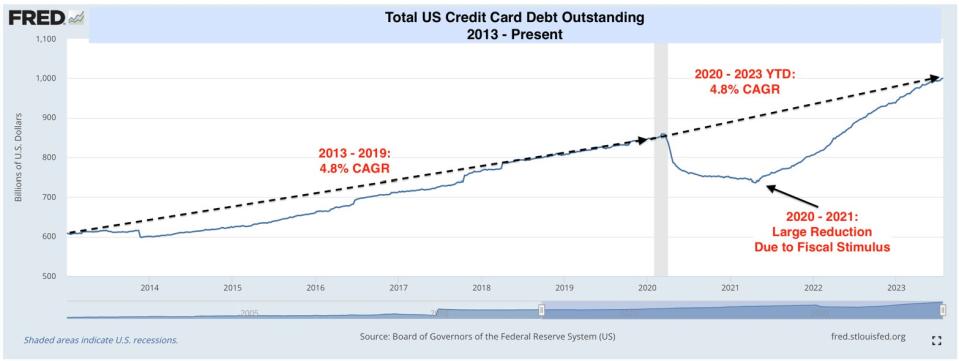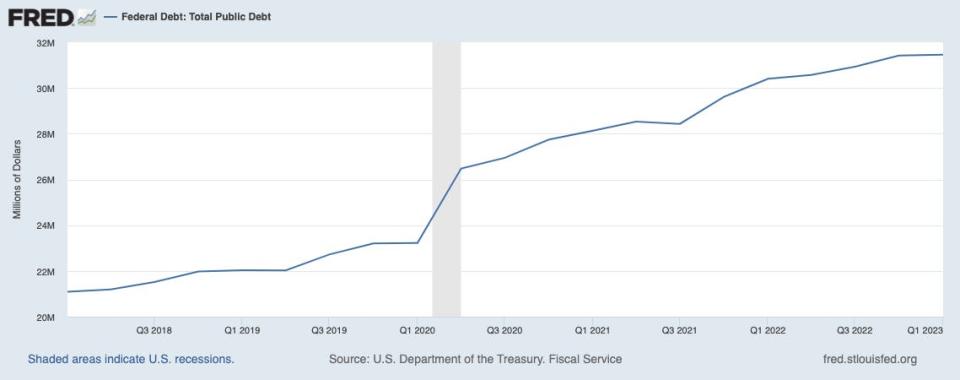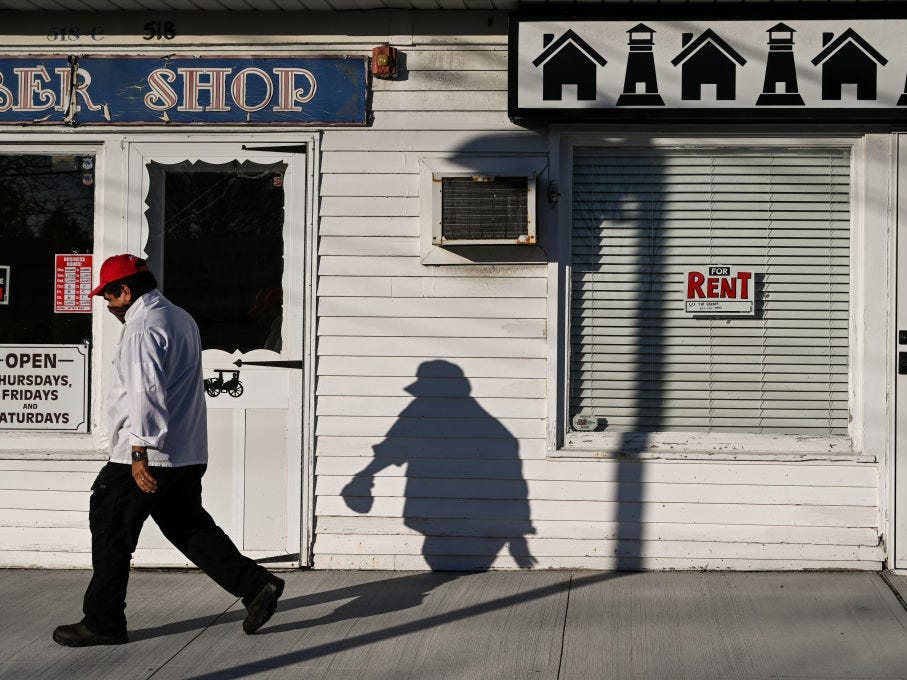The United States is facing a debt storm. Here are 5 charts that show there’s a problem with preparation.

-
A storm of public and private debt problems is heading into the market.
-
Warning signs showed up in increasing credit card balances, late payments, and other indicators.
-
Here are the signs that the United States is dealing with problems stemming from its mountain of debt.
A storm of public and private debt is brewing in the US – and problems are already starting to surface as loans pile up and borrowers’ confidence falters.
At a broad level, Fitch’s downgrade of US credit ratings and Moody’s downgrade of 10 US banks this summer indicates the issuance of both US sovereign credit (the political polarization that impedes the US’s ability to meet debt obligations) and debt originating from banks. Sector (structural stresses caused by tighter credit conditions and Fed policy).
But more detailed problems are bubbling across debt markets as well, with both the public and private sectors facing a very different environment than in the past decade when interest rates were at historic lows after the 2008 crisis. If low interest rates spur a sugar rush for massive borrowing, Higher interest rates may be paving the way for a sugar crash.
This was all too evident earlier this year as a Silicon Valley bank collapsed, spurred by mismanagement of its balance sheet that was affected by a bond portfolio that was declining rapidly as interest rates rose. SVB, Signature Bank, and First Republic all fell in quick succession.
The fallout from this event has been relatively contained, but that hasn’t stopped market experts and investment figures from sounding the alarm about high debt levels in an era of rising prices. The hedge fund myth Ray Dalio and chief economist Nouriel Roubini They are among those who have warned that a full-blown debt crisis could be on the way.
Here are five charts that indicate flashing warning signs in US debt markets.
1. Private debt levels are rising at an astounding rate
Private debt levels are increasing rapidly, and have hit new records this year. Credit card debt just exceeded a trillion dollars For the first time ever, according to Federal Reserve data.

Unsecured personal loans also hit a new record, reaching an unprecedented $225 billion in 2023, according to TransUnion. As is corporate debt, which saw volumes grow 6.2% over the past year to $7.8 trillion each. Janus Henderson.
The public debt picture looks even worse. The national debt balance exploded over $32 trillion for the first time this year, with potential $5 billion added every day over the next 10 yearsAccording to Bank of America.

2. Corporate defaults are on the rise
Companies began to collapse under the burden of their debts as interest rates rose, with the volume of Defaults among US companies in 2023 exceeded last year’s total. Moody’s Investors Services data showed that 55 US companies defaulted on their debts in the first six months of the year – an increase of 53% from the 36 companies that defaulted on their debts in 2022.
Up to $1 trillion in corporate debt It could default if the US faces a full recession, Bank of America strategists have warned, though the bank no longer sees a potential recession in 2023.
3. Late payments accumulate
People and companies are increasingly falling behind on their loan payments.
In the commercial real estate sector, the percentage of commercial property owners who are 30 days or more behind on payments — or have already defaulted on their mortgages — rose to 3% in the first quarter of this year, according to data from Mortgage Bankers Association, Reversing a pre-existing downtrend. This is reflected in the higher delinquency rate on commercial mortgage security loans, which have been on the rise this year.

Meanwhile, the delinquency rate for all personal loans rose to 2.23% in the first quarter of this year, up from just 1.7% in the first quarter of 2021, according to Fed data.

4. Banks want to get rid of risky debt
Banks are already trying to get rid of loans that have a higher risk of default, even if that means selling those assets at a discount. JPMorgan, Goldman Sachs, and Capital One are among those on Wall Street trying it Disposing of large commercial real estate assetsBloomberg reported this week.
Banks are also cutting back on debt altogether as financial conditions tighten. that spells problem for the commercial real estate industryThere is about $1.5 trillion in CRE debt that is due to reach maturity in the coming years and will need to be refinanced.
Realtors can run into problems when they go to refinance their mortgages as rates are higher and property appraisals are going down. a Commercial mortgage default wave It may be on the horizon, according to some veteran investors, and banks have already begun to rein in lending activity after a wave of bank failures earlier this year triggered a brief banking crisis.
Earlier this year, Morgan Stanley indicated that the credit crunch had hit as banks registered The largest recorded drop in lending.

Read the original article at Business interested







